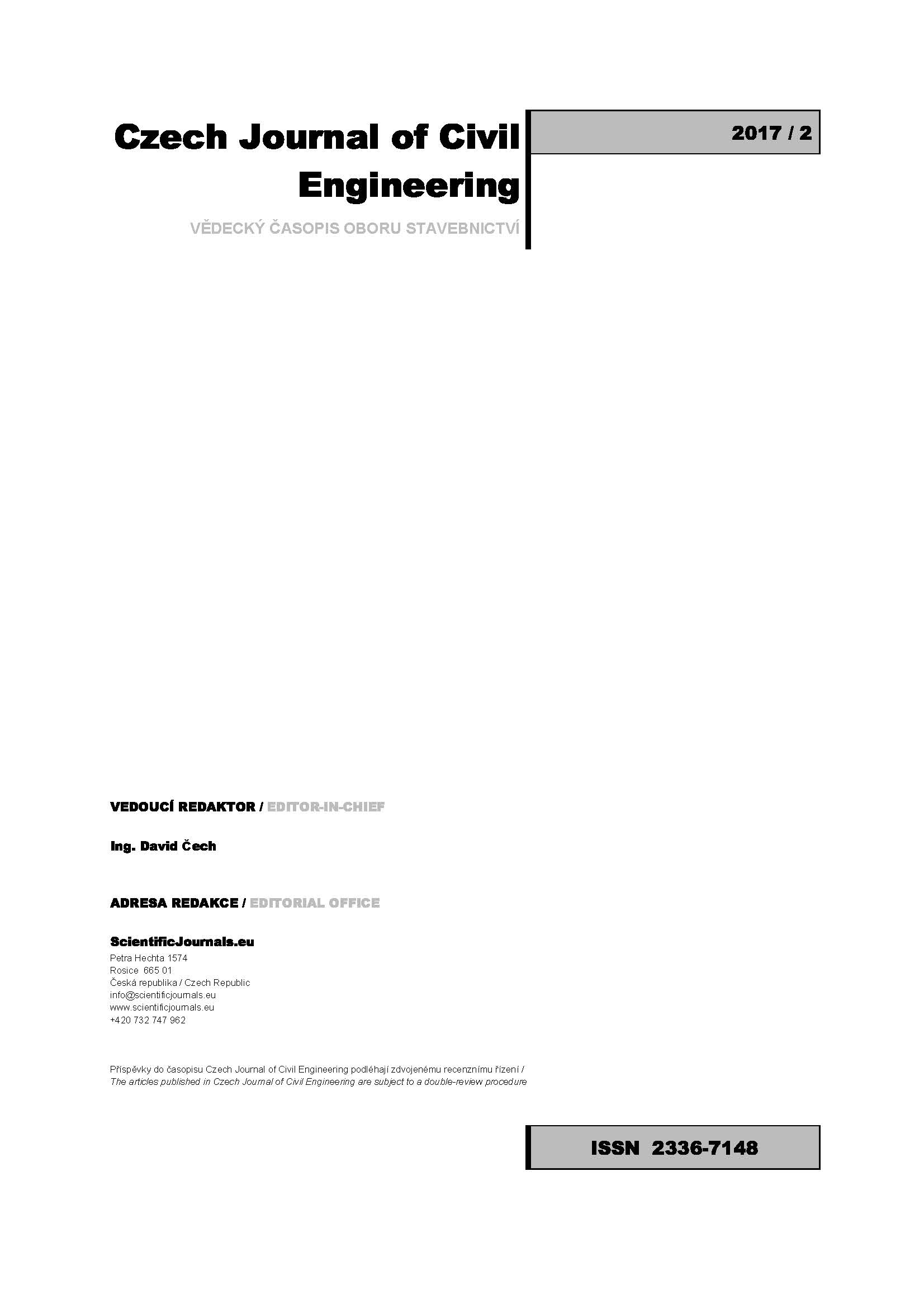IN-SITU MEASURED VELOCITY IN THE SECODARY SETTLING TANK AND ITS APPLICATION FOR THE FLOW SIMULATION
DOI:
https://doi.org/10.51704/cjce.2017.vol3.iss2.pp52-57Keywords:
Flow simulation, WWTP, flow velocityAbstract
Wastewater treatment process consists of several steps. Separation of sludge from water is one of the essential. Correct design of the settling tanks is therefore crucial for its operation. In case that these objects don’t work properly, they cause problems in the whole ecosystem as they lead to the increased load to the recipients. In this paper proper data collecting method is investigated and data collection is described. Actual point velocity of flow in the secondary settling tank was measured in several points throughout the tank. Measurement was carried out in WWTP Dolný Kubín and WWTP Nižná nad Oravou in Slovakia and these data are used for model calibration and verification. Consequently, simulation of the flow in the tank will be provided. Modelling of the flow in this type of conditions is difficult therefore it is necessary to find right tool to perform precise work. Data that were obtained by measurement have been supplemented by the data provided by the operation of the WWTP.
Metrics
References
RAMIN, E., Wágner, D. S., YDE, L., BINNING, P.J., RASMUSSEN, M. R., MIKKELSEN, P. S., PLÓSZ, B. G.: A new settling velocity model to describe secondary sedimentation. Water Research, Vol. 66, 2014, pp. 447‒458.
GHAVI, H., KRIS, J.: A numerical model of flow in sedimentation tanks in Slovakia. Pollack Periodica, Vol. 3, No. 2, 2008, pp. 59‒73.
STANKO, Š., HRUDKA, J., ŠKULTÉTYOVÁ, I., HOLUBEC, M., GALABOVÁ, K., GREGUŠOVÁ, V., MACKUĽAK, T.: CFD analysis of experimental adjustments on wastewater treatment sedimentation tank inflow zone. Monatshefte für Chemie - Chemical Monthly, volume 148, 2017, pp. 585-591.
MOLNÁR, V.: Computational fluid dynamics: interdisciplinary approach with CFD applications. Bratislava: Slovenská technická univerzita v Bratislave, 2011. ISBN 9788081060489.
PATZINGER, M.: Computational fluid dynamics investigation of shallow circular secondary settling tanks: Inlet
geometry and performance indicators. Chemical Engineering Research and Design, 2016, volume 112, pp. 122-131. ISSN 0263-8762.
Flo-Mate Model 2000, Installation and Operations Manual, Marsh-McBirney Inc, 1990.
PATZINGER, M, KAINZ, H., HUNZE, M., JÓZSA, J.: Influence of secondary settling tank performance on suspended solids mass balance in activated sludge system. Water research, volume 46, pp. 2415-2424. 2012. ISSN 0043-1354.
SHAHROKHI, M., ROSTAMI, F., SAID, M., SYAFALNI.: Numerical modeling of baffle location effects on the flow pattern of primary sedimentation tanks. Applied Mathematical Modeling, Vol. 37, 2013, pp. 4486‒4496.
ROSTAMI, F., SHAHROKHI, M., SAID, M., ABDULLAH, R.: Numerical modeling on inlet aperture effects on flow pattern in primary settling tanks. Applied Mathematical Modelling, volume 35, pp. 3012-3020. 2011. ISSN 0307-904X.
DIEHL, S., ZAMBRANO, J., CARLSSON, B.: Steady-state analysis of activated sludge processes with a settler model including sludge
compression. Water Research, Vol. 88, 2016, s. 104‒116.
Downloads
Published
How to Cite
Issue
Section
License
Copyright (c) 2023 Veronika Gregušová, Michal Holubec, Kristína Galbová, Štefan Stanko

This work is licensed under a Creative Commons Attribution-NonCommercial-NoDerivatives 4.0 International License.
Creative Commons Attribution-NonCommercial-NoDerivatives 4.0 International Public License
Articles published in Czech Journal of Civil Engineering are licensed using Creative Commons License. Except where otherwise noted, individual articles in the Czech Journal of Civil Engineering are licensed under a Creative Commons Attribution-NonCommercial-NoDerivatives 4.0 International (CC BY-NC-ND 4.0).









